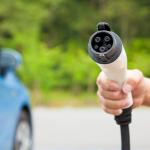
How to buy an EV Charger: The Ultimate Guide
By Precise Plumbing and Electrical|November 16, 2022
Australians are slowly embracing electric vehicles (EVs), compared to China, Europe and the US. In the wake of soaring gas prices, EVs are becoming more sustainable and affordable options.
EVs boast a better driving experience because the low centre of gravity ensures smooth handling and instant torque. Besides the zero gas fees, you can charge your EV anywhere you park, whether at home, work, or public charging stations on the road.
This article demystifies EV chargers, guiding you as you choose the best charger for your EV.
What are EV Chargers?
EVs, like your smartphone, require charging to get enough power to run the electric motor. An EV charger or charging station draws electric current from the power grid and directs it to the EV via a plug or connector.
The EV stores the energy in a robust battery pack that powers the vehicle’s electric motor. The charging process is simple; you only need to plug the charger into EV's inlet through a charging cable.
Charging Levels
There are three ways to charge an EV. You can use a level 1 standard wall outlet or a Level 2 home charging station that uses a higher-capacity outlet. You can also use a level 3 charger at a public charging station.
Typically, higher charging levels have higher power outputs and therefore charge your EV faster. However, the charging time depends on the EV's charging capacity, the charging station's power output, and the type of battery.
There's two-way communication between the EV and the EV charging station for safety purposes. The electric current moves through the charging cable and waits for the signal to deliver power once you plug in your EV.
Level 1 - Portable EVSE
Level 1 charging means plugging your EV into a regular 120V AC power outlet, which allows a maximum of 2.3 kW. Level 1 charging is exceedingly slow and requires overnight charging.
At a rate of 6 to 8 kilometres (4 to 5 miles) of range per hour, it can take over 24 hours to charge an empty EV battery fully.
Besides the slow pace, level 1 charging can endanger you and your vehicle due to a lack of communication from the charging station to the EV.
Level 2 - Wall Chargers
A Level 2 charging works faster, delivering between 3.4 and 22 kW. When using the maximum output, you can increase your battery’s range by about 120km (75 miles) within one hour.
Level 2 charging stations require a dedicated 208V or 240-volt outlet. Most homes lack this type of outlet, so you’ll likely need the services of a professional electrician.
Level 2 chargers are perfect for home charging since they are easy to use and highly efficient. These chargers offer various smart connectivity options, intelligent functionalities, and safety features.
Level 3 - DC Fast Chargers
Level 3 charging or DC fast charging is the fastest method. These chargers bypass AC/DC converter, allowing them to deliver direct current (DC) straight into the EV battery.
Level 3 chargers are ideal for commercial or industrial uses since they carry more power faster than level 1 and level 2 chargers. They require advanced technology and high-voltage power supplies of 480 V or more.
Conclusion
Your primary parking space at home is the best and most convenient place to charge your EV. Charging at home allows you to leverage electricity tariffs by charging during off-peak hours.
Or better yet, you can connect your charging station to your solar system for daytime charging. A level 2 charging station requires expertise, so it's best to call a qualified electrician to install your EV charging station safely.
EVs boast a better driving experience because the low centre of gravity ensures smooth handling and instant torque. Besides the zero gas fees, you can charge your EV anywhere you park, whether at home, work, or public charging stations on the road.
This article demystifies EV chargers, guiding you as you choose the best charger for your EV.
What are EV Chargers?
EVs, like your smartphone, require charging to get enough power to run the electric motor. An EV charger or charging station draws electric current from the power grid and directs it to the EV via a plug or connector.
The EV stores the energy in a robust battery pack that powers the vehicle’s electric motor. The charging process is simple; you only need to plug the charger into EV's inlet through a charging cable.
Charging Levels
There are three ways to charge an EV. You can use a level 1 standard wall outlet or a Level 2 home charging station that uses a higher-capacity outlet. You can also use a level 3 charger at a public charging station.
Typically, higher charging levels have higher power outputs and therefore charge your EV faster. However, the charging time depends on the EV's charging capacity, the charging station's power output, and the type of battery.
There's two-way communication between the EV and the EV charging station for safety purposes. The electric current moves through the charging cable and waits for the signal to deliver power once you plug in your EV.
Level 1 - Portable EVSE
Level 1 charging means plugging your EV into a regular 120V AC power outlet, which allows a maximum of 2.3 kW. Level 1 charging is exceedingly slow and requires overnight charging.
At a rate of 6 to 8 kilometres (4 to 5 miles) of range per hour, it can take over 24 hours to charge an empty EV battery fully.
Besides the slow pace, level 1 charging can endanger you and your vehicle due to a lack of communication from the charging station to the EV.
Level 2 - Wall Chargers
A Level 2 charging works faster, delivering between 3.4 and 22 kW. When using the maximum output, you can increase your battery’s range by about 120km (75 miles) within one hour.
Level 2 charging stations require a dedicated 208V or 240-volt outlet. Most homes lack this type of outlet, so you’ll likely need the services of a professional electrician.
Level 2 chargers are perfect for home charging since they are easy to use and highly efficient. These chargers offer various smart connectivity options, intelligent functionalities, and safety features.
Level 3 - DC Fast Chargers
Level 3 charging or DC fast charging is the fastest method. These chargers bypass AC/DC converter, allowing them to deliver direct current (DC) straight into the EV battery.
Level 3 chargers are ideal for commercial or industrial uses since they carry more power faster than level 1 and level 2 chargers. They require advanced technology and high-voltage power supplies of 480 V or more.
Conclusion
Your primary parking space at home is the best and most convenient place to charge your EV. Charging at home allows you to leverage electricity tariffs by charging during off-peak hours.
Or better yet, you can connect your charging station to your solar system for daytime charging. A level 2 charging station requires expertise, so it's best to call a qualified electrician to install your EV charging station safely.



